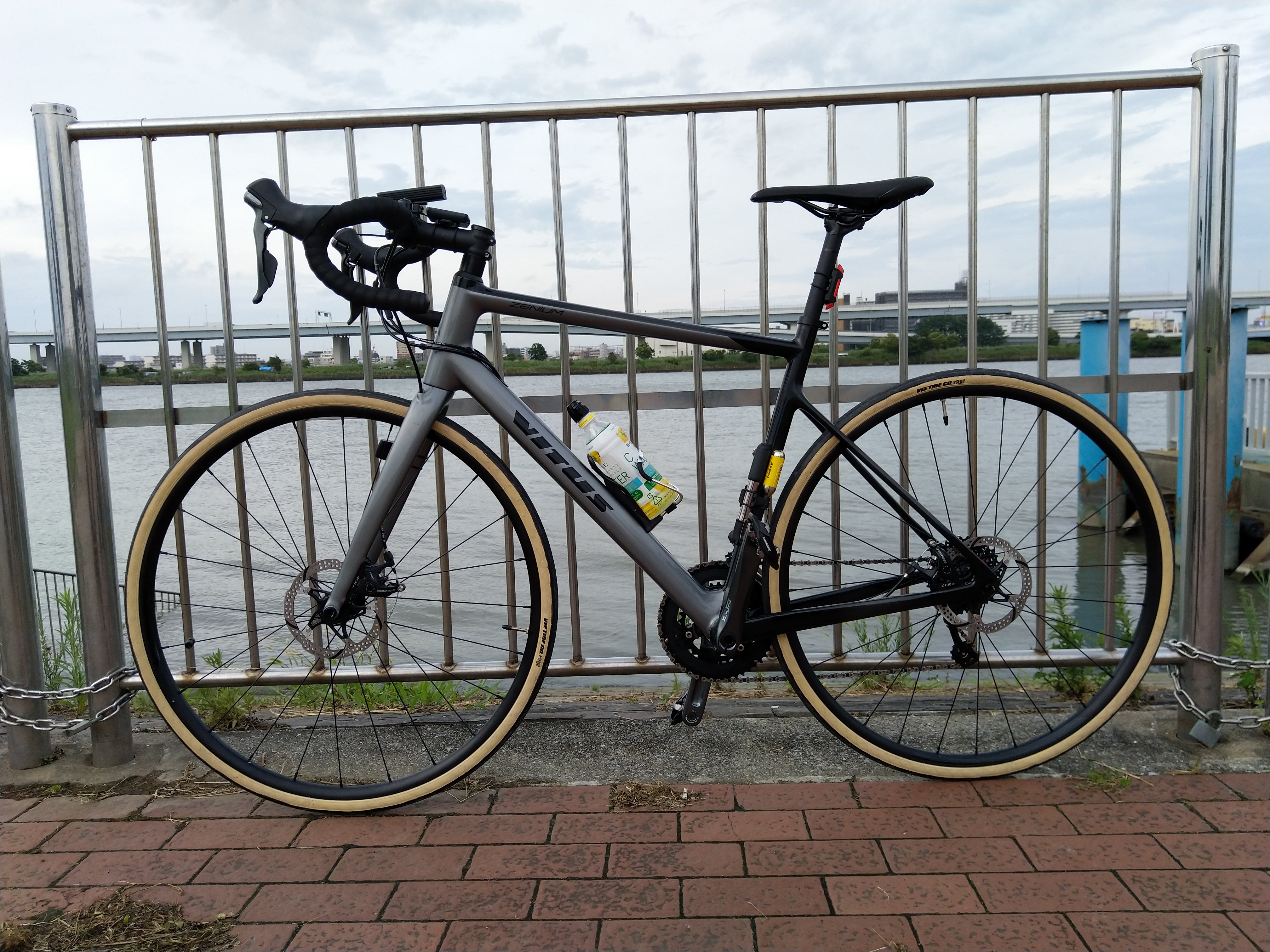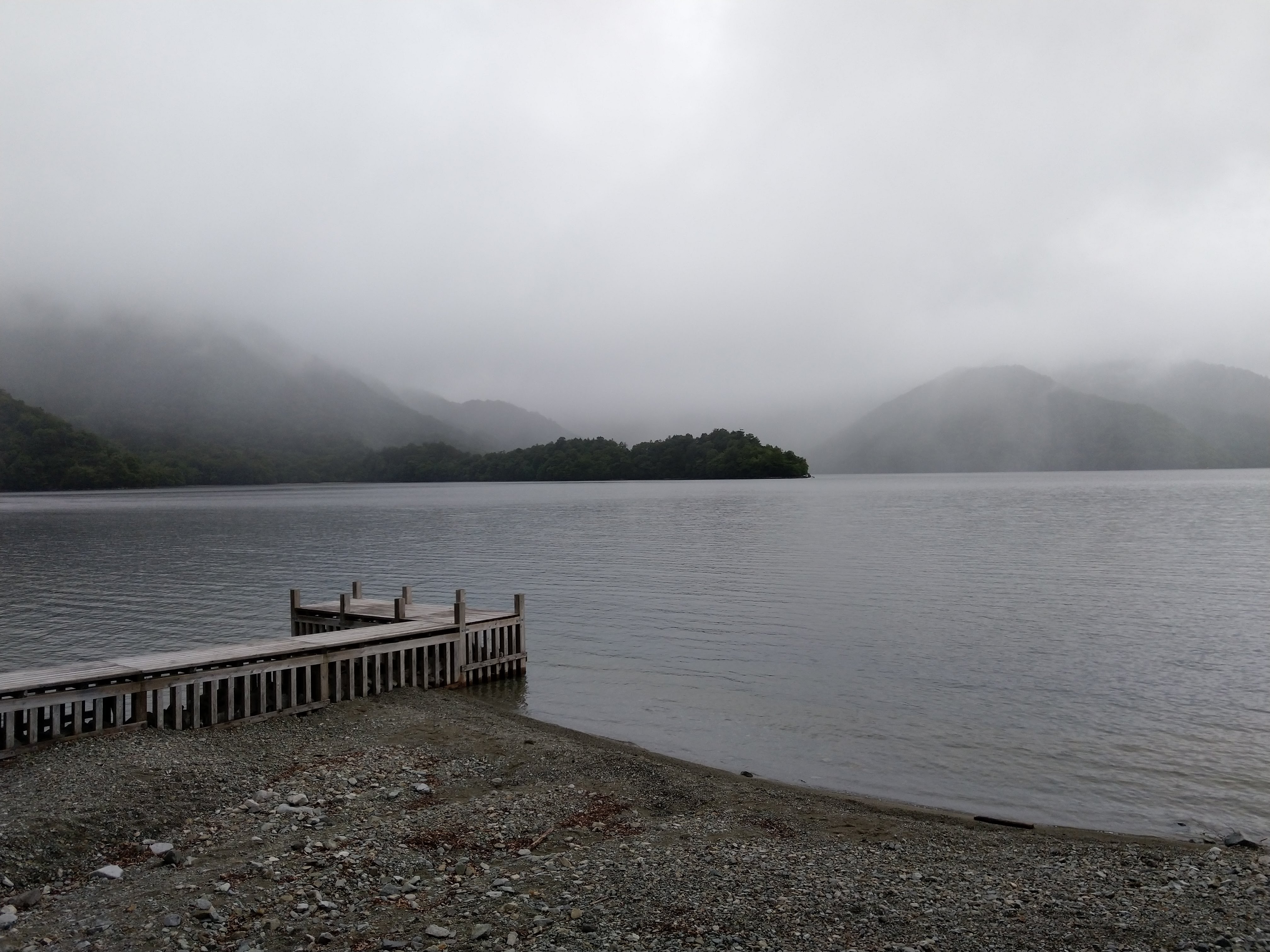Cycling all around Japan
14 Nov 2025 | #japanI recently sold my roadbike, so it is a good time to look back on the around 10,000 km that I rode it during the last 5 years.
Buying the bike
Before coming to Japan, I used to commute to work by bicycle, so after arrival I quickly bought a simple, commuter bike. Then the pandemic hit, and I started to cycle more and more. A friend let me try his roadbike, and I was hooked. The ease of flying through the landscape made me want more of it. So I bought a roadbike, specifically a Vitus Zenium Road Bike (Tiagra) 2020, an entry-level carbon frame bike:

I ordered it from https://www.chainreactioncycles.com/, and they shipped it from the UK, so I had to pay import duties on arrival. Overall I spent around 200,000 yen:
- 129,999 yen for the bike
- 9,704 yen for shipping
- 20,000 yen or so for duties (I don’t remember exactly)
- 50,000 yen or so on clothes (padded pants, padded gloves, clip-in shoes) and accessories (lights, bell, pump, bike bags, a rinko bag to take it on trains)
First long ride: Tokyo to Nikko
My first long ride was to the historic city of Nikko. It was a 156 km long ride and took me seven and a half hours of moving time (with 10 hours from start to finish).
I really enjoyed the ride, and stayed for a few days in Nikko before heading back to Tokyo. The nearby Lake Chuzenji remains one of my favorite places of Japan.

Longest ride: Biwaichi
Lake Biwa is Japan’s biggest lake, and it has a well marked bicycle road around it. This is called Biwaichi and the local tourism organizations work hard to advertise it (the official website even has an English version). There is a bridge across the lake on the South third of the lake, so one can do the North part only (150 km) or the full circle (200 km). I did the full circle, and as I was staying in Kyoto, I had an extra 20 km to get to the lake and back.
A ride of this length takes a lot of time, so I started shortly before 6am on an April morning. After 10 hour of riding, I arrived back at 7pm.
The ride was really fun: great roads, mostly flat (since it follows the lake), beautiful scenery. But it also showed me that riding for 10 hours is very tiring and it also gets boring. There is only so many podcasts one can listen to in a day.
Longest multi-day ride: Tokyo to Kyoto in 4 days
I had a 5 day weekend, and wanted to go to Kyoto, so decided to go by bike. The Kyoto-Tokyo road was important historically, and there were multiple routes. One of them, Tokaido, follows the ocean. (This is also where the Tokaido Shinkansen goes, hence its name.) I decided to follow this route myself as well.
The distance is around 500 km, so I was planning to do it in 5 days, 100 km per day. But to keep a bit of flexibility for later days, I started with a bit more than 100. This was still during COVID, and Japan didn’t allow foreign tourists, so most hotels were empty. This let me decide in the morning how far I will go, and book the hotel for the next night.
First day I went from Tokyo to Numazu, covering 128 km. For the most part the route follows the ocean, however here I had to cross the Izu peninsula (the shinkansen has a tunnel for this). So I had to climb up to Hakone. This meant an elevation of over 1,400m during the day with a 834m long climb to Hakone. This was pretty rough. But at least I could take a photo of my bike in Hakone with the snow-covered Mt.Fuji in the background:
Second day was spent following the ocean from Numazu to Hamamatsu. 136km, riding from 7:30 to 5pm. I could even do a bit of a sightseeing in Hamamatsu (they have a castle).
Third day was from Hamamatsu to North of Nagoya, 129 km, nice views, fun ride. Leaving the ocean behind, but still mostly flat.
Since I was doing more than 100 km each day, by the fourth day I had about 140 km left. My original plan was to take it easy and split it into two days, but the weather forecast was becoming rainy for the 5ht day, so I decided to push through and went all the way to Kyoto on the last day, covering the reamining 140 km.
Overall this was the breakdown of the trip:
| Distance | Elevation | Moving time | Elapsed time | Average speed | |
|---|---|---|---|---|---|
| Day 1 | 127.93 km | 1432 m | 6:48:53 | 8:43:31 | 18.8 km/h |
| Day 2 | 135.96 km | 597 m | 7:24:09 | 9:13:28 | 18.4 km/h |
| Day 3 | 128.84 km | 625 m | 7:12:24 | 9:33:12 | 17.9 km/h |
| Day 4 | 137.74 km | 552 m | 7:10:00 | 9:50:05 | 19.2 km/h |
| Overall | 530.47 km | 3206 m | 4:35:26 | 13:20:16 | 18.6 km/h |
It was a challenge, and I really enjoyed it. Although on the way back from Kyoto, I opted for the shinkansen. It was fun to do it once, but not sure if I would have enjoyed it if I had to do it again.
Craziest ride: 6 prefectures’ limited frappuchino
Starbucks frappuchinos in Japan are different from other countries’: they don’t usual contain coffee, but instead refer to a cold, sugary drink with special flavours, mostly in time-limited releases.
In 2021, Starbucks Japan was celebrating their 25th anniversary, so they created a special drink for all 47 prefectures of the country, and each was only be available in their respective prefectures. You can see each flavors on the official site: 47 JIMOTO Frappuchino.
This gave me a challenge: how many prefectures can I reach on bike in a single day to taste their special frappuchino? I designed a route that touched on 6 prefectures:
- Starting in Tokyo with my morning coffee of an
Origin Coffee Jelly Caramel Frappuccino® Blended Coffee - Riding over to Ibaraki for a
Melon Igappe Creamy Frappuccino® Blended Cream(Ibaraki grows a lot of melons) - Going North in Chiba and picking up a
Nagomi Mitarashi Coffee Frappuccino® Blended Cream(that had some sweet soy sauce in it) - Touching the corner of Saitama for a
Tasaitama Strawberry & Citrus Frappuccino® Blended Juice Drink(this wasn’t even milk-based) - Reaching Gunma for a
Danbe Yogurt Mango Frappuccino® Blended Cream(a fancy mango yoghurt) - Finishing the day with a
Raisama Pachipachi Chocolate Frappuccino® Blended Creamin Tochigi, before catching the train back to Tokyo
Overall it still took 180 km and a full day to cover all of this. But the hardest part wasn’t the distance, or the navigation, but the fact that I drunk most of the drinks. Each of them being up to 500 kcalories of pure sugar messed with my body in a way no other bike ride did. So this ride goes to the list of things that was fun once, but I won’t do it again.
Selling the bike
Cycling became one of my main hobbies during the pandemic, and it continued afterwards. But cycling for me is mainly a sport to do alone: I like to push my limits, and that’s rarely possible in a group setting. Then after I met my now-wife, I had less empty weekends to fill with long rides, and after we had our baby, I stopped going for long rides almost entirely. Using the road bike for daily errands is also simply impractical: no basket, no kickstand, no mudguard, needs special shoes.
So after about 2 years of not using the bike at all, I felt bad that the bike was just collecting rust here, when it was made to go fast. My life changed for the better, and I enjoy spending my weekends with my family, so cycling long distances again is something that will need to wait a few years. (I’m hoping to go for cycling trips once my kids are old enough.)
So I decided to sell my road bike. I asked an online store, Bici Amore for an estimate, and they said 30,000 to 45,000 yen, depending on the condition. My wife posted it to Jimoty and someone bought it for 50,000 yen.
As I was riding it to the handover location, I remembered all the great rides I had, and I was happy to have had all these adventures.